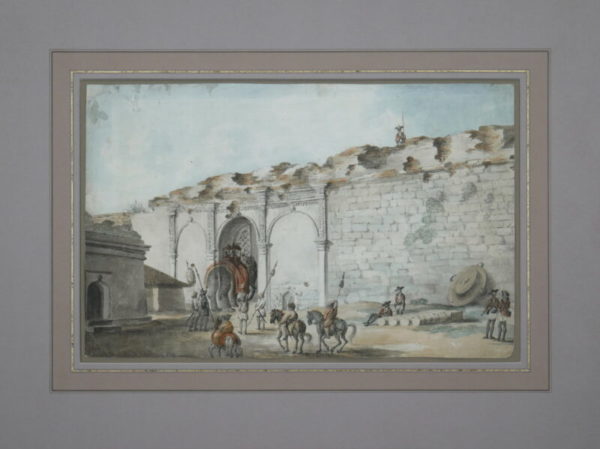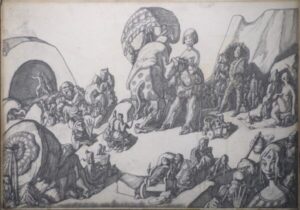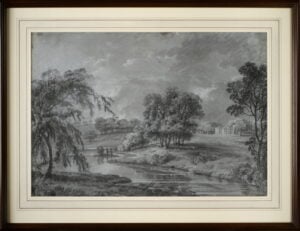Description
Condition: Colours are fairly strong. The marks at the top left side of the painting are pigment stains and are almost certainly contemporary with the watercolour. The top left corner has been repaired along with two small tears; one at the lower middle edge and the other to the middle left edge of the sheet.
James Hunter was a Lieutenant in the Royal Artillery who also served under Lord Cornwallis Governor-General of India in 1791–92. He travelled extensively and sketched several views in the Kingdom of Mysore during the famous Mysore war. Forty of his sketches were later reproduced using the technique of aquatint etching on copper plates. These were published under the title; “Picturesque scenery in the Kingdom of Mysore” by Edward Orne 59 New Bond Street, London 1804-1805.
Bangalore Fort began in 1537 as a mud fort. The builder was Kempe Gowda I, a vassal of the Vijaynagar Empire and the founder of Bangalore. Hyder Ali in 1761 replaced the mud fort with a stone fort and it was further improved by his son Tipu Sultan in the late 18th century. It was damaged during an Anglo-Mysore war in 1791. It still remains a good example of 18th-century military fortification. The army of the British East India Company, led by Lord Cornwallis on 21 March 1791 captured the fort in the siege of Bangalore during the Third Mysore War (1790–1792). At the time the fort was a stronghold for Tipu Sultan. Today, the fort’s Delhi gate, on Krishnarajendra Road, and two bastions are the primary remains of the fort. The Delhi Gate was ornate with decoration and was large enough to easily allow even elephants to traverse through it. A marble plaque commemorates the spot where the British breached fort’s wall, leading to its capture. The old fort area also includes Tipu Sultan’s Summer Palace and his armoury. The fort has provided the setting for the treasure hunt in the book Riddle of the Seventh Stone.



